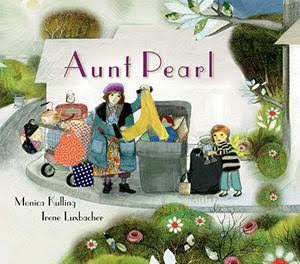For the Love of Aunt Pearl
This month, we are discussing good manners. I offer that good manners are a function of empathy: when we engage in good manners, we are thinking beyond ourselves to consider our companion (our child, our teacher, our supervisor).
Building an understanding of what others are feeling, how our own actions impact others is a valuable life skill. Learning to empathize helps to build a sense of security and stronger relationships with others. It encourages tolerance and acceptance of others. And in so doing, it reduces the likelihood of bullying.
And while studies suggest there are different strategies in teaching empathy, such as talking about feelings, one of the best ways of all to help children develop a sense of empathy is by reading books. Children (and adults) learn to associate feelings and actions with their favorite characters. Remember when Atticus Finch, said to Scout , “You never really understand a person until you consider things from his point of view … until you climb inside of his skin and walk around in it.”
Stories are the closest thing we have to “Walking around in someone else’s skin.” They make us more human. Stories allow a child to navigate complex emotions, looking at diverse perspectives, and learning to leverage relationships for collaboration and progress.
A recent book that epitomizes empathetic engagement is Monica Kulling’s exquisite new book, Aunt Pearl. This powerful and poignant story brings a welcomed sensitivity to themes of homelessness and family, beautifully illustrated by the incomparable Irene Luxbacher.
When Aunt Pearl arrives pushing a shopping cart full of her worldly goods, siblings Dan and Marta discover a creative, if troubled, free-spirit in their aunty. “Normal people scare me,” reads one of Aunt Pearl’s buttons. Aunt Pearl teaches the siblings about second chances, about accepting others on the own terms, even as they learn to accept themselves. As with life itself, the book doesn’t offer answers to a challenging question. As the narrative implies, sometimes some things can’t be fixed. But everyone deserves second chances, understanding and acceptance, and everyone deserves love.
We are homo narratus, story animals, suggests Kendall Haven (Story Proof: The Science Behind the Startling Power of Story, 2007). We have told our stories for over 100,000 years. Not every culture has developed codified laws or written language, but every culture in the history of the world has created stories.
A recent book that epitomizes empathetic engagement is Monica Kulling’s exquisite new book, Aunt Pearl. This powerful and poignant story brings a welcomed sensitivity to themes of homelessness and family, beautifully illustrated by the incomparable Irene Luxbacher.
When Aunt Pearl arrives pushing a shopping cart full of her worldly goods, siblings Dan and Marta discover a creative, if troubled, free-spirit in their aunty. “Normal people scare me,” reads one of Aunt Pearl’s buttons. Aunt Pearl teaches the siblings about second chances, about accepting others on the own terms, even as they learn to accept themselves. As with life itself, the book doesn’t offer answers to a challenging question. As the narrative implies, sometimes some things can’t be fixed. But everyone deserves second chances, understanding and acceptance, and everyone deserves love.
What were your favorite books that taught you to climb inside another's skin, to peek into a life that is different from yours, that allowed you to reach a new, deeper understanding of the other’s experience?
--Bobbi Miller

Comments
Post a Comment